www.johntyman.com/peru/13.html
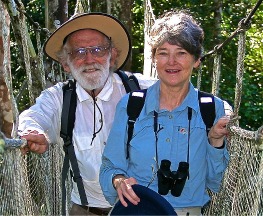 |
CULTURES IN CONTEXT PERU The Incas and Prehistoric Cultures IV: INCA CULTURE 4.4: Incan Building Techniques |
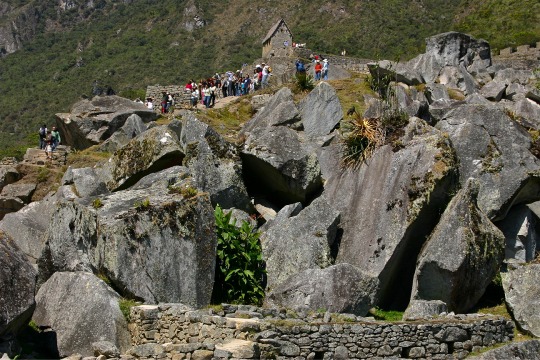
137. Though there is little documentary material illustrative of the quality of Incan civilization, there is a lot of physical evidence … in the quality of their architecture especially. Peru abounds in homes, palaces, temples, terraces, roads, and canals all built from stone … not of sandstone, which is easily worked, but of locally available igneous rocks like granite, especially andesite. (Stone quarry at Machu Picchu; abandoned in a hurry.) |
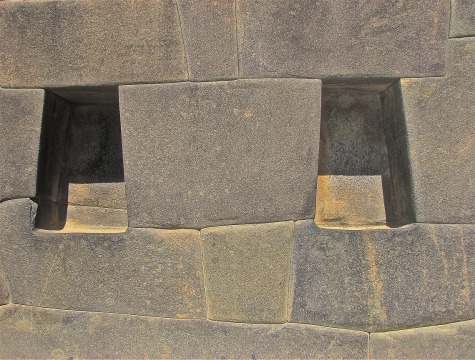
138. The Incas were superb stonemasons, long before machine tools were invented. They did not use cement, but shaped their blocks of stone so precisely that they fitted together perfectly, so tightly that it is impossible even today to slip even a knife between most of the stones. Windows and doorways and the niches for religious artefacts were invariably trapezoidal in shape; not only because this was visually more appealing but because openings narrower at the top than at the bottom were better able to withstand earthquakes. (Wall with the trapezoidal niches at Ollantaytambo.) |
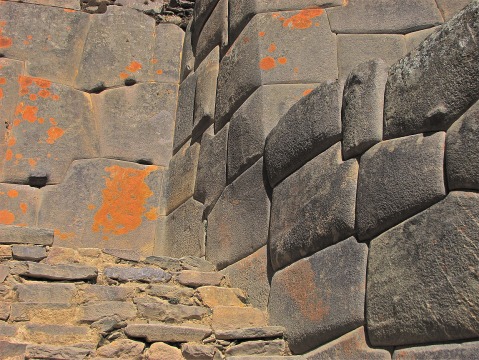
139. To cut such hard rocks the Incas used stone, bronze or copper tools, usually splitting the stones first along natural fracture lines. Since they had no wheels, stones were rolled into place using heavy wooden beams and earth ramps. It is believed the stones, after they had been chipped into shape, were swung into place and ground together to create perfectly interlocking faces … convex above and concave below. (Wall below terraces at Ollantaytambo.) |
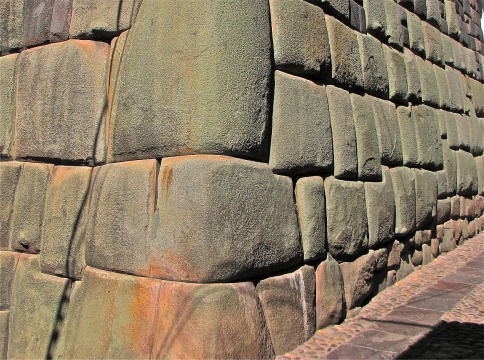
140. Inca walls were slightly inclined inside and the corners were rounded. Using a range of such techniques Inca stonemasons, produced buildings with incomparable seismic resistance. During an earthquake of small or moderate magnitude, masonry simply did not move, and during a strong earthquake stone blocks would “dance” near their normal positions and lay down exactly in right order after an earthquake. (Wall alongside street in Cuzco.) |
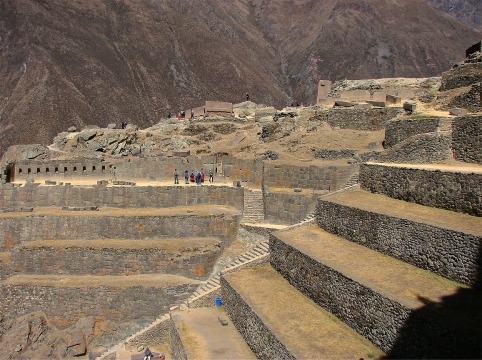
141. In addition to palaces and temples the Incas developed the most extensive network of terraces in the Americas, turning mountainsides into stepped croplands, and sometimes ornamental gardens. Retaining walls were built of fieldstone with packed earth scooped out at the base and replaced by a layer of stones for drainage. The earth was then loosely repacked, and topped off with a layer of silt from the valley bottom. (Terraces at Ollantaytambo.) |
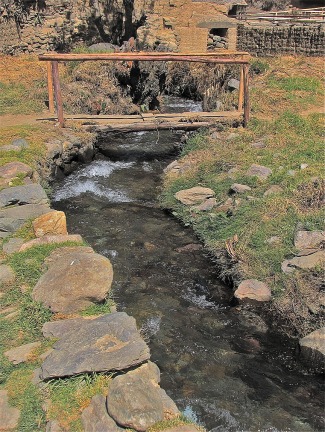
142. The Incas also built canals which carried water to these terraces from springs at higher altitudes. Some of these channels ran underground. They also carried water for drinking and livestock use, even for baths and fountains. (Irrigation channel at Ollantaytambo) |
![]()
Text and photos by John Tyman
Intended for Educational Use Only.
Contact Dr. John Tyman at johntyman2@gmail.com
for information regarding public or commercial
use.
![]()
www.hillmanweb.com
Photo processing, Web page layout, formatting
and hosting by
William
Hillman ~ Brandon, Manitoba ~ Canada